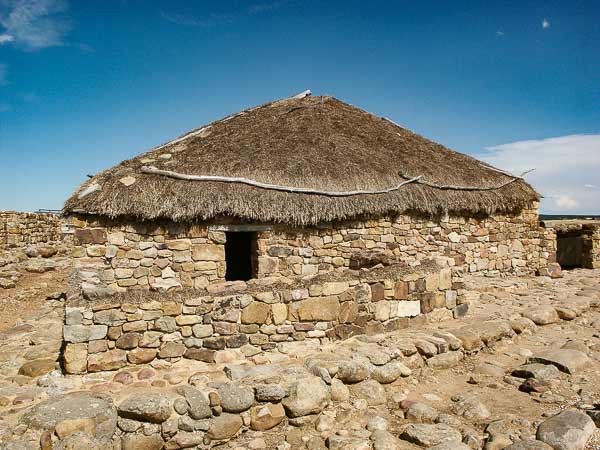The Importance of Numantia
Numantia. Ring a Bell? If not, it's likely you've no idea about the Roman Conquest of Spain. Historical sources often equate the conquest of Numantia with that of Carthage.
The fall of Numantia was more noble than that of the capital of Africa, and the conqueror of Carthage obtained the victory only when the enemies had been consumed by famine or by self-destruction -- Lempriere's Classical Dictionary connmments on Scipio Africanus, conqueror of Numantia.
Numantia was a Celtiberian settlement located 7 km north of Soria, occupying a hill known as Cerro de la Muela.
The Celtiberians, Celtic tribes on the Iberian peninsula, put up a 20 year resistance to everything Rome sent their way--until the Romans sent their best General, Publio Conrnelio Scipio, or Scipio Africanus. Even so, it still took eleven months of hard siege before the city fell in the summer of 133 B.C. Most survivors choose suicide, the few who didn't were sold as slaves.
Numantia was so important to Spain that Miguel de Cervantes wrote a play about the Siege called El Cerco De Numancia - The Siege of Numantia.
So now you know.
Because of both Celtic and Roman occupations, the archaeological site of Numantia has a couple of interesting features--typical reconstructions of celtic and Roman houses, complete with cooking utensils, beds, and furniture. Although the site is smaller than you might imagine, it's fascinating to take the archaeological walk and see the various "neighborhoods." At the end of the slide show, there is info on visiting and getting more info on Numantia.
After your visit of the excavations at Numantia you'll want to head to the nearby town of Soria to the Museo Numantino, which includes two rooms dedicated to the two cultures. Soria is a fine city to stay in while you visit in any case.
If you're in the area of central Spain at the end of June, you'll want to take in the Historic Reinactment in nearby Garray:
These performances take place every year, during the last Saturday of the month of July, in the village of Garray, Soria, Spain. The performance takes place in the village's streets in the morning, and go on in the evening, at a stage in the Archaeological Site on Numantia.
Below are some details from the Numantia Archaeolgical Site.
A Window into the Celiberian World
A Celtic Window Opens Onto the Life of the Celtiberians
This is the level of detail you'll find on the reconstruction of a Celtiberian house in Roman times. Reconstructions were done using the old methods--tools that would have been available or were reconstructed based on artifacts found in the excavations. It's a fascinating window into the clash of cultures in Spain at the time.

Exterior of a Celtiberian House
Here is a picture of the exterior of the Celtiberian house at Numantia. Externally, it's hard to differentiate it from a later Roman residential dwelling. It's furnished as it would have been furnished 2000 years ago, a fascinating peek at a culture other than the Roman.

Grinding and Milling Stones
Numantia wasn't just a military battlefield. This picture shows the many milling wheels excavated at the archaeological site of Numantia.

Later House with Roman Columns
Eventually, after everything normalized, Roman traditions took over and columns became all the rage, as you see from this modified house foundation.

Soria
We suggest you stay in the interesting town of Soria for your visit to Numantia; It's 7km to the north. Soria hotels & apartments.
Soria is the least populated provincial capital of Castile and León with a population just short of 40,000 people.
Soria is known for it's Romaesque churches. The Church of Santo Domingo, shown to the right, was built in the 12th century.
